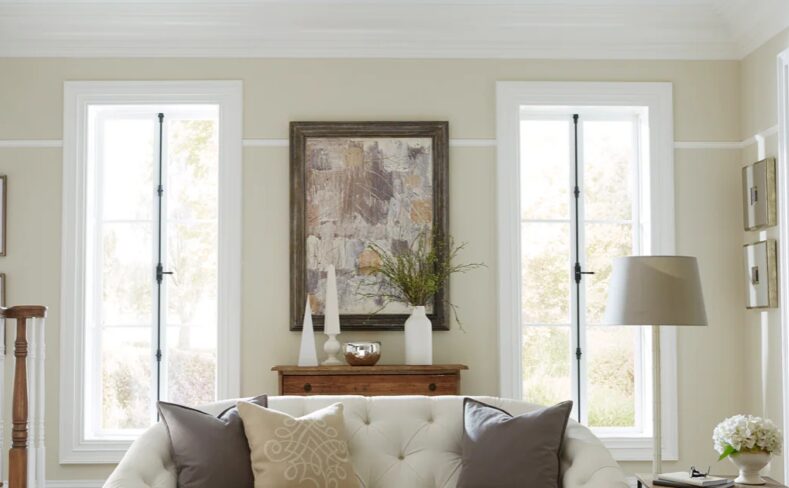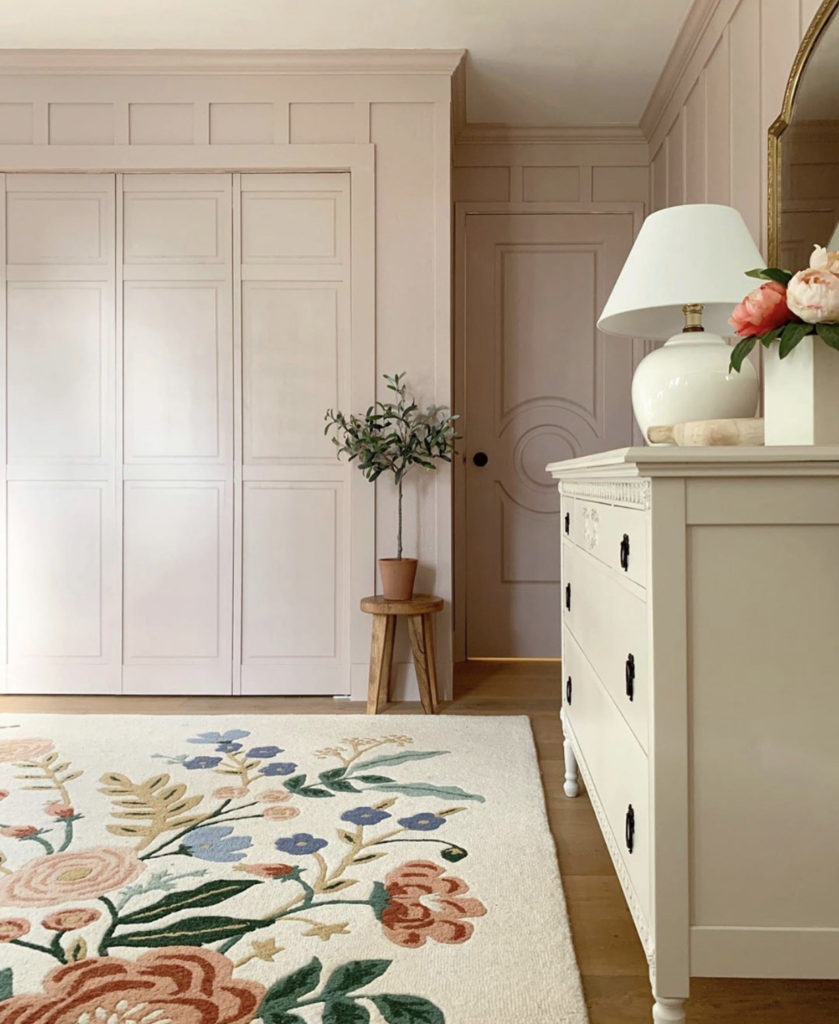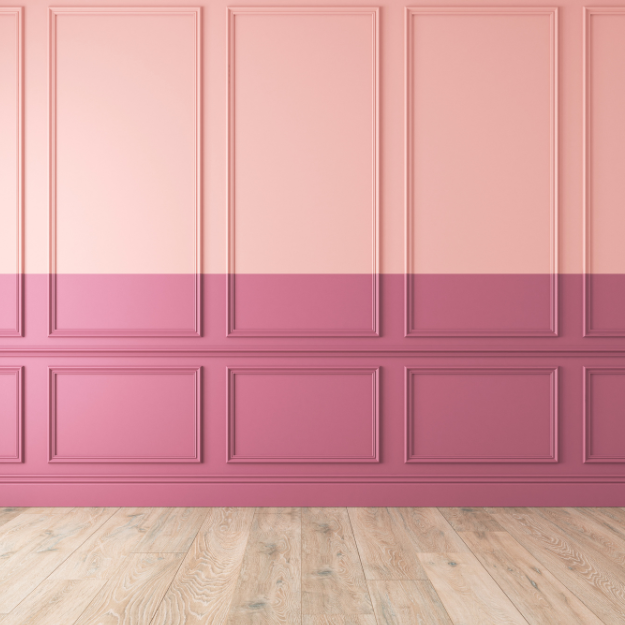
Popular Wall Molding and Wall Trim for Your Home in 2024
Wall molding is an integral part of interior decoration, not only adding color and personality to a room, but also reflecting the owner’s taste and lifestyle. In interior design, the selection and arrangement of wall trims can often be the finishing touch, injecting vitality and charm into the entire space. Whether it is hanging paintings, wallpapers, decorative paintings, wall clocks or other decorations, they can be the finishing touch on the wall, making the room more vivid and rich.
In this article, we’ll explore the various types of wall moldings and provide some creative and practical decorating advice to help you create a distinctive interior space that makes your home feel more welcoming and cozy.
Related Articles
The Best 6 Matching Strategies for Wall Panel
5 Wall Paneling Ideas—Modern Panel Designs to Elevate Every Space
7 Popular Wall Decor Design Styles to Beautify Your Walls
I. What is wall molding?
Wall coverings are decorative frames for doors, windows, and walls that can add an attractive design touch to your room while covering seams, gaps, and other surface imperfections. While some types of wall decor are simple in style, there are also a variety of options available with intricate details that suit both traditional and modern homes.
Popular accents such as baseboards and crown molding are found in many architectural designs. For an elevated look, homeowners can choose personalized accents such as chair rails, picture frames, or even moldings that mimic built-in frames on the wall.
It’s simple to match wall coverings to your house by altering their hue, in addition to applying various moldings. The dark walls contrasted with white trim give these spaces a stately, conventional appearance. Conversely, light-colored walls can be used with dark décor to produce a striking contrast.
II. 6 common types of wall moldings
Here, explore five common types of wall decor and their features to give your space a new look.
1. Chair rail
– Best for: Dining rooms or any room with lots of chairs
A chair rail is a decorative horizontal wall molding that is usually placed three to four feet above the ground. Chair rail moldings should typically be installed at a height of 25% of the room’s height. This is where the wall and your dining chairs might make touch. Originally, these rails were meant to keep seats off walls in restaurants.
But now days, the style is a well-liked decorative accent for areas. You can use these wall moldings to create a visually appealing branch of your space. Chair rails are most commonly used as moldings and typically cost about $1-2 per linear foot.
Chair rails are both functional and beautiful and are often used in conjunction with lower wainscoting, designed to protect walls from furniture damage. Together, these elements are a great place to contrast molding and wall paint for a classic look. Hardwood and polyurethane options are the most durable materials, but regardless of material, homeowners should be aware that chair rails are prone to collecting dust. Because this trim is at eye level, it may require more frequent cleaning than baseboards or crown molding.
The great thing about chair rails is that you can have different finishes on two different parts of the wall. You can paint the two parts different colors to make them more aesthetically pleasing. Or add decorative-style wallpaper to one half of the wall and paint the other half. Or outline two different types of wall coverings, such as paint and wallpaper. Chair rails allow you to express your creativity and add an elegant look to the room.

2. Crown molding
– Best for: Living rooms, dining rooms and other public rooms
Crown molding is exactly what you think of, an overhead crown that shines in the space where the wall and ceiling meet. Also called cornice molding or molding, it often has a complex outline; it may be elaborate, with decorative cutouts, or simple and linear in design.
Crown molding occurs where the wall and ceiling meet and is typically installed at a 45-degree angle with a hollow space behind it. Crown molding, which is frequently found in expensive or historic homes, is the ideal accent to give your main living room a traditional vibe. Unlike other types of wall coverings that tend to be made from wood, modern crown molding is often made from lightweight materials like wood, vinyl, or PVC.
If installed properly, crown molding is a durable piece of trim that should be moisture-resistant and last for decades. Do-it-yourself homeowners can save time perfecting drywall grout on their ceilings by covering them with crown molding, but cutting tight, seamless installation angles can be difficult. Hiring a finish carpenter may help achieve an attractive result without flaws. Crown molding costs approximately $2-3 per foot to purchase, which may increase to $8-10 per foot if you hire a carpenter.
If you plan to incorporate crown moldings into your home, be sure to match them to your baseboards to create balance. Typically, rooms with higher ceilings require thicker moldings to stand out, while lower ceilings should use thinner moldings. For rooms with 8-foot ceilings, crown molding should be no higher than 6 inches. For spaces with 10-foot ceilings, use moldings about 8 inches high to make the room feel proportional.
Crown molding can hide imperfections and can be installed on walls and ceilings to enhance visibility from below. Hundreds of patterns and styles are available from many architectural eras, including Corinthian, Doric, Modern and Art Deco.
3. Baseboard and baseboard styles
– Best for: Every room in the house
Baseboards are the most common type of trim in homes, decorating a room and serving as a defining line at the base of a wall. They also hide the gap between the bottom of the wall and the floor. Typically used where the floor meets the wall, this look is both beautiful and practical. For starters, it makes the transition between floors and walls more seamless, especially when the two are drastically different in color, finish, or texture. Baseboards shield walls from damage caused by slamming doors and cabinets and also aid in hiding uneven surfaces.
Baseboards range from short, narrow styles to 6-inch or larger baseboards found in many older homes. The cost to install baseboards typically runs around $0.60 per foot for MDF options and $1.20 for natural wood or PVC.
Baseboard styling exists in countless forms. Each is designed for a specific purpose – to house a door, for example, or to provide a visual transition at the junction of wall and floor. Used to trim the wall where it joins the floor, baseboards typically measure three to five inches. Baseboard styles are usually simple with a small piece of quarter-round or semi-circle trim.
When installed against the floor, especially when adding a quarter round, baseboards prevent drafts from entering the house. They might eventually, nevertheless, start to have holes close to the floor. Repositioning the quarter round, shoe molding, or baseboard itself can solve this problem for the convenience of the homeowner.
– Tips
If you plan to paint the trim, you can use MDF or plastic trim. MDF is one of the cheapest decorative materials you can buy. Plastic is more expensive but more durable than MDF which breaks easily. Other advantages of plastic polymers are that they are lightweight and waterproof.
4. Picture frame wall molding
– Best for: Formal public rooms, such as a dining room or living room
Wall mounted picture frame molding is a less functional form of decorative molding that is purely decorative, usually four pieces of equal size molding are installed to create the look of a picture frame. This wall element is not as common as other types of decor, but it is an attractive and unique style that can be found in many historic homes and formal designs. Prefabricated cubes typically cost between $8 and $25 and are typically made of wood or polyurethane. Polyurethane’s moisture- and mildew-resistant properties make it a more durable option.
Picture frame molding is usually located on the lower half of the wall below the chair rail. They give a home a formal, elegant look and may be convenient for those who want their home to be more sophisticated.
Since picture frame shapes tend to be more formal, you can get creative with how you use them in your home. While you can go for a classic look by painting them the same color as the walls to add texture and depth to the space, creating a shading effect, you can also paint the inside of the moldings a different color to contrast and add to the room. A touch of personality.

5. Picture rail
– Best for: living and dining rooms, bedrooms, hallways
A picture rail is similar to a chair rail in that it is placed horizontally around the perimeter of the room. However, it mounts much higher on the wall, 1 or 2 feet below the ceiling, and has a different profile than the chair rail. More unique than other types of trim, picture rails have traditionally served as hooks for hanging pictures from wire. Wood and plaster are the most common options, with wood being lighter and less likely to crack over time. Picture rails typically cost between $1 and $2 per foot, depending on the materials used.
Picture rails allow you to hang art frames without having to drive nails directly into the wall. Often combined with crown molding, this type of molding is 1 or 2 inches tall and appears to be 7 to 9 feet above the ground.
These moldings allow you to hang paintings without damaging your walls. Instead of hammering nails into the wall, nail them directly to a rail, which is a flat plate that’s attached to the wall, and hang your art from it. Another type of picture rail is a pole from which you can hang artwork using wire or rope.
These types of moldings are a great choice if you want to change your hanging art regularly, rather than leaving the same art hanging for years. Picture rails are perfect for spaces where pictures are typically hung, such as bedrooms, living rooms, and family rooms. They also make great decorations for hallways.
6. Arch wall shape
– Best for: Living rooms, dining rooms and other bedrooms
A more straightforward kind of crown molding, cove wall molding is highly common in Indian homes. It is a simple wall design with some stepped ornamentation and concave curves. Coving is a clever method to increase the sense of vertical height and enlarge a room. Keep the cove white or paint it a contrasting color for more drama.
III. Conclusion
In interior decoration, wall molding plays a vital role. It is not only the key to beautifying the space, but also an important element that reflects the owner’s personality and taste. By cleverly selecting and arranging wall decorations, you can add unique style and charm to your home space, creating a warm and comfortable living environment.
Whether it is hanging paintings, wallpapers, decorative paintings or other decorations, they should be coordinated with the design style of the entire space, and should be able to echo with home accessories, furniture and other elements to form a unified decorative effect. I hope that the wall molding selection and arrangement suggestions provided in this article can bring inspiration and enlightenment to your interior decoration, making your home more beautiful, comfortable and tasteful. If you have any questions or ideas about wall trims, please feel free to contact us!
Quick Quotation



